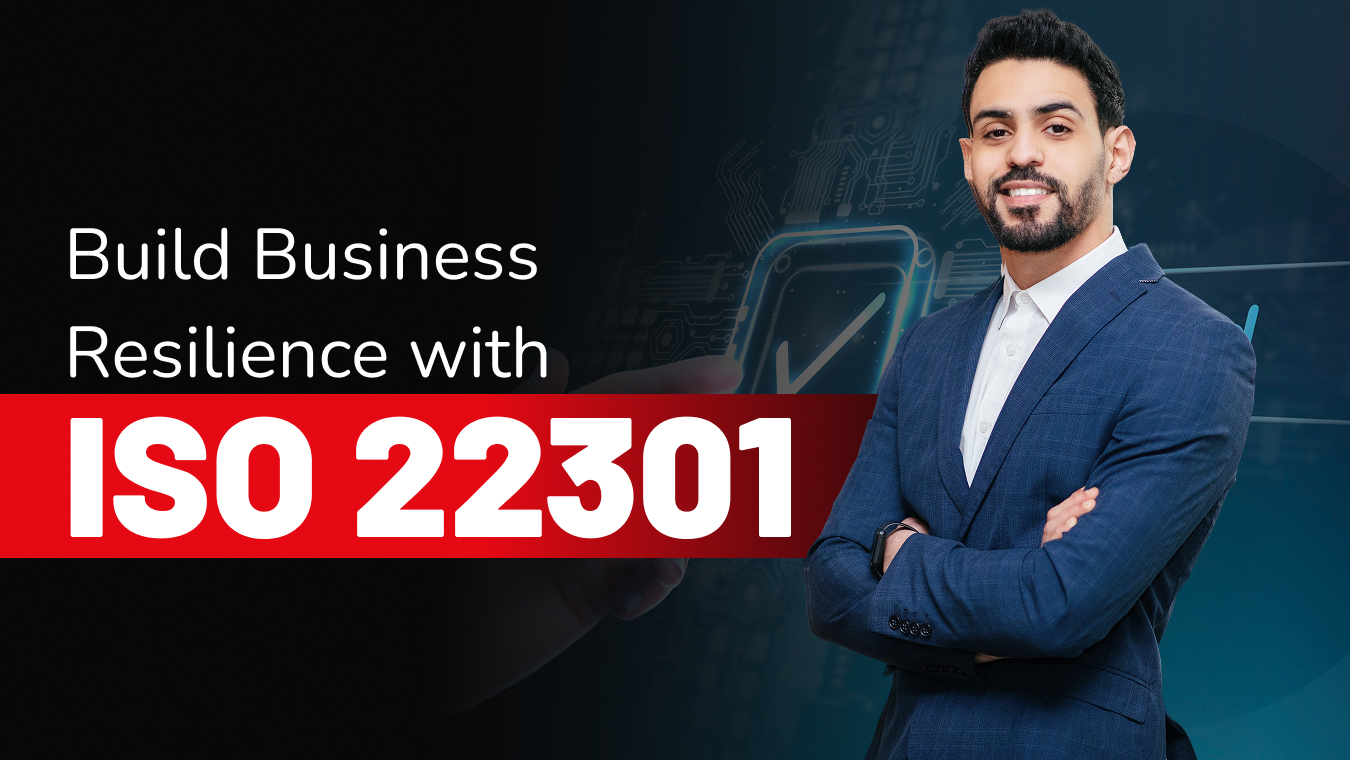Business Continuity: Implementing ISO 22301 in Crisis Times
In this era marked by continuous disruption—may be it is from cyberattacks, natural disasters, pandemics, or supply chain failures—resilience has become more than buzzword. It’s a requirement. For companies aiming to maintain operations and recover from unexpected events, a structured Business Continuity Management System (BCMS) is the backbone for any survival. That’s where ISO 22301 comes in—a globally standard that provides a framework for building business continuity.

But how does companies practically implement ISO 22301, during disaster times? Let’s see real-world strategies and practices for adopting this standard to build long-term resilience.
ISO 22301 is the international standard for Business Continuity Management. It maintains the requirements of creating, maintaining, and continually improving a BCMS. The goal is to make sure that companies are responding and also recovering from disruptions in a very timely manner.
Different disaster recovery plans mainly focus on IT systems, ISO 22301 covers a big scope. It makes sure continuity of all business functions—including human resources, customer service, supply chain, finance, and many more.
The standard promotes a active culture of risk identification, impact analysis, and response planning—all personalized to the companies unique context.
In this crisis times, speed of decision-making, roles clarity, and resources availability to become paramount. Without a predefined continuity structure, companies risk making non proactive inconsistent choices that can make more worse the impact.
ISO 22301 provides the framework for:
- Identifying critical operations
- Understanding interdependencies
- Establishing response teams and communication channels
- Testing response mechanisms through drills
- Regularly reviewing and updating the plan
By maintaining to this standard, companies can transition from confusion to control, even when the situation around them is uncertain.
1. Leadership Commitment : Implementation starts at the beginning. Main and senior leadership must not only approve adoption of ISO 22301 but also champion the cause. Without their commitment, business continuity can remain a checkbox activity more than a transformative initiative.
Practical Tip:
Initiate awareness sessions for officials to link continuity planning with business purposes such as trust on brand, regulatory compliance, satisfaction of customer, and financial performance.
2. Business Impact Analysis (BIA) : One of the main practical steps in ISO 22301 implementation is performing a Business Impact Analysis. This helps us to identify which functions are critical and how long the companies can survive without them.
You’ll need to define:
- Recovery Time Objectives (RTO): How quickly must a process be restored?
- Recovery Point Objectives (RPO): How much data loss is acceptable?
This data allows prioritization of resources and recovery plans.
Practical Tip:
Include division heads and frontline employees in the BIA process. Their practical knowledge on daily operations is irreplaceable.
3. Risk Assessment and Planning : Other than finding critical processes, ISO 22301 make sure non-reactive risk identification. Organizations must assess internal and external threats and assess their prospect and potential impact.
This is important during crisis periods like political unrest, cyber incidents, or health emergencies.
Practical Tip:
Use situation-based planning. Develop playbooks for all types of incidents—ransomware attack, fire, pandemic outbreak, etc. Each playbook should contain contact lists, decision-making, and step-by-step recovery process.
4. Emerging a Business Continuity Strategy : Once you find your risks and critical processes, the next step to develop strategies that keep them running—or resume them—during disruption.
This may contain:
- Enabling Remote work
- Redundant systems and backing up sites
- Agreements of Third-party supplier
- Manual workarounds
Practical Tip:
Make sure continuity strategies are financially and operationally possible. It’s better to implement a basic, work plan than implementing heavy one based on resource that remains on paper.
5. Maintaing a Response Structure : Having a plan is not just enough. ISO 22301 requires companies to set up a clear command-and-control structure for incident response.
Assigning specific roles:
- Lead on Incident Response
- Communications Officer
- IT Recovery Head
- Facility Manager
Practical Tip:
Educate individuals and run simulations daily. A well-prepared team will perform best under pressure than one who is reading the manual during a crisis.
6. Continuous Testing and Enhancement: Business continuity isn’t a single-time project. ISO 22301 promotes a loop on continuous improvement. Daily testing—through exercises, simulations, and post-incident reviews—helps redefine the plan.
Practical Tip:
After every threat incident or drill, there holds a “lessons learned” session. Update your BCMS based on gaps and observations.
7. Communicate, Communicate, Communicate: Even the best continuity plan will fail if any one does not know about it. ISO 22301 highlights internal awareness and eudcation.
Practical Tip:
Build a communication plan that includes everyone like employees, customers, vendors, and regulators. Use email communications, intranet portals, SMS alerts, or emergency hotlines.
Implementing ISO 22301 is not just about audits or checking compliance boxes. It’s about implanting resilience into the core part of the organization. It’s a cultural shift—from non proactive firefighting to non reacative planning.
In disaster times, this mindset can be the difference between survival and shutdown.
The main goal is to start small, maintain consistent, and continuous evolvement of your business continuity practices. ISO 22301 gives you the main roadmap—but the journey depends on your people, processes, and perseverance.
By embracing this framework, companies not only weather the storms of today but build a stronger, more adaptive future.
At Azpirantz, we don’t just help you implement ISO 22301—we partner with you to build a resilient, future-ready organization. With hands-on consultancy, industry-aligned strategies, and real-world expertise, we ensure your Business Continuity Management System is not only compliant but also crisis-proof. Ready to safeguard your operations and lead with confidence in uncertain times? Explore our ISO 22301 Consultancy Services and take the first step toward true resilience.
*This content has been created and published by the Azpirantz Marketing Team and should not be considered a professional advice. For expert consulting and professional advice, please reach out to [email protected].
We're Here To Help